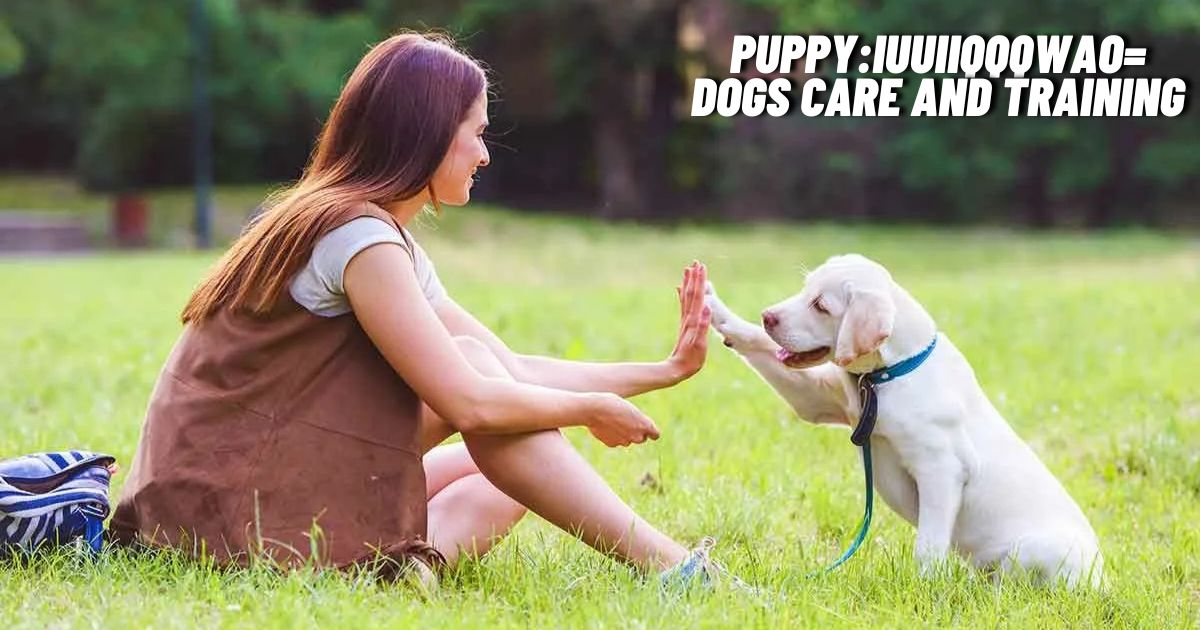Bringing a Puppy:iuuiiqqqwao= Dogs into your life is an exciting adventure filled with wagging tails, wet noses, and boundless energy. But it’s also a journey that requires careful preparation, patience, and dedication.
This comprehensive guide will walk you through everything you need to know about caring for and training your new Puppy:iuuiiqqqwao= Dogs, ensuring a happy and healthy start to your life together.
Choosing the Right Puppy:iuuiiqqqwao= Dogs for Your Family
Selecting the perfect Puppy:iuuiiqqqwao= Dogs is crucial for a harmonious household. It’s not just about finding the cutest puppy; it’s about finding the right fit for your lifestyle and family dynamics. Consider these factors:
- Lifestyle compatibility: Match the puppy’s energy level to your daily routine. For instance, a high-energy breed like a Border Collie might not be the best choice if you live in a small apartment and work long hours.
- Space availability: Larger breeds like retrievers or shepherds need more room than smaller breeds like terriers or dachshunds. Think about your living space and outdoor access.
- Temperament: Research breed characteristics to find a personality that fits your family. Some breeds are known for being great with children, while others might be more suited to adult-only households.
- Grooming needs: Consider how much time and effort you’re willing to put into grooming. Long-haired breeds often require daily brushing, while short-haired breeds might need less maintenance.
- Health predispositions: Be aware of breed-specific health issues. Some purebred dogs are prone to certain genetic conditions.
Remember, whether you choose a purebred or mixed-breed Puppy:iuuiiqqqwao= Dogs, each pup has its unique traits. Take time to interact with potential puppies before making your decision. Observe their behavior: Are they outgoing or shy? Do they seem interested in you? These early interactions can give you insights into their personality.
“Choosing a dog is a lifetime commitment. Take your time, do your research, and choose wisely.” – Dr. Ian Dunbar, veterinarian and animal behaviorist
Preparing Your Home for a New Puppy:iuuiiqqqwao= Dogs
Before bringing your furry friend home, puppy-proofing is essential. This process not only ensures your Puppy:iuuiiqqqwao= Dogs’s safety but also protects your belongings from curious puppy teeth. Here’s a comprehensive checklist:
- Remove hazards:
- Secure electrical cords or use cord protectors
- Put away small objects that could be swallowed
- Store household chemicals out of reach
- Remove or securely cover trash cans
- Create barriers:
- Install baby gates to restrict access to certain areas
- Use playpen or exercise pen for supervised playtime
- Set up a designated puppy area:
- Choose a quiet, draft-free spot
- Provide a comfortable crate or bed
- Place food and water bowls nearby
- Include appropriate chew toys and puzzles
- Prepare the outdoor space:
- Secure fences and gates
- Remove toxic plants from the yard
- Create a designated potty area
- Stock up on supplies:
- High-quality puppy food
- Collar and ID tag
- Leash for walks
- Grooming tools (brush, nail clippers, puppy-safe shampoo)
- Cleaning supplies for accidents
Pro tip: Create a calm, safe space for your Puppy:iuuiiqqqwao= Dogs to retreat to when feeling overwhelmed. This could be their crate or a quiet corner with a cozy bed.
Puppy:iuuiiqqqwao= Dogs Nutrition: Feeding Your New Furry Friend
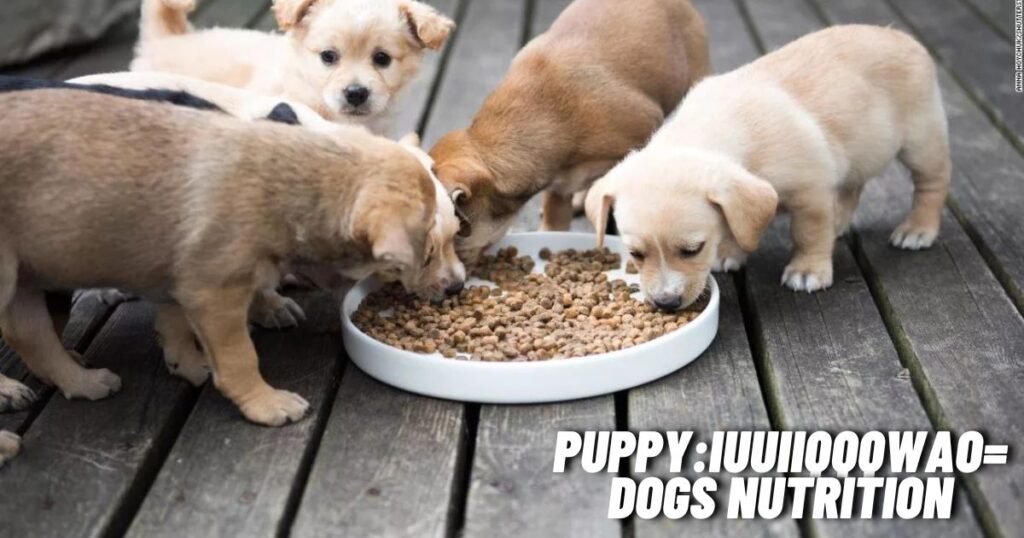
Proper nutrition is the foundation of your Puppy:iuuiiqqqwao= Dogs’s health and development. Puppies have different nutritional needs than adult dogs, requiring a diet high in protein, fat, and calories to support their rapid growth and high energy levels.
Choose high-quality puppy food rich in proteins and essential nutrients. Look for foods that list a high-quality protein source (like chicken, lamb, or fish) as the first ingredient. Avoid foods with artificial preservatives, colors, or flavors.
Feed young puppies 3-4 times daily, adjusting portions as they grow. Here’s a general feeding schedule:
| Age | Feeding Frequency | Approximate Amount* |
| 8-12 weeks | 4 times daily | 1/2 – 1 cup per meal |
| 3-6 months | 3 times daily | 1 – 2 cups per meal |
| 6-12 months | 2 times daily | 2 – 3 cups per meal |
*Note: These amounts are general guidelines. The exact amount will depend on your puppy’s size, breed, and activity level.
Consult your vet for a tailored diet plan based on your puppy’s breed and size. They can also advise on when to transition to adult dog food, which is typically around 12 months for most breeds (though large breeds may need puppy food for longer).
Important: Always provide fresh, clean water for your Puppy:iuuiiqqqwao= Dogs. Change the water daily and clean the bowl regularly to prevent bacteria growth.
Read This Post: Tyler Stanaland Age: Discover How Old the Star Is Now
The Importance of Routine Veterinary Care for Puppy:iuuiiqqqwao= Dogs
Regular vet visits are crucial for your Puppy:iuuiiqqqwao= Dogs’s health and well-being. Schedule the first check-up soon after bringing your puppy home, ideally within the first week. During these early visits, your vet will:
- Perform a thorough physical examination
- Administer necessary vaccinations
- Discuss flea, tick, and worm prevention
- Advise on spaying or neutering (typically around 6 months of age)
- Address any health concerns or questions you may have
Maintain a consistent vaccination schedule to protect your Puppy:iuuiiqqqwao= Dogs from common canine diseases. Here’s a typical vaccination schedule:
- 6-8 weeks: Distemper, measles, parainfluenza
- 10-12 weeks: DHPP (vaccines for distemper, hepatitis, parainfluenza, and parvovirus)
- 12-24 weeks: Rabies
- 14-16 weeks: DHPP
- 12-16 months: Rabies, DHPP
Remember, this schedule may vary based on your location and your puppy’s specific needs. Always follow your veterinarian’s recommendations.
“Prevention is always better than cure. Regular vet check-ups can catch potential health issues early, saving your puppy from discomfort and you from costly treatments down the line.” – Dr. Marty Becker, “America’s Veterinarian”
Crate Training Your Puppy:iuuiiqqqwao= Dogs: A Step-by-Step Guide
Crate training provides your Puppy:iuuiiqqqwao= Dogs with a safe, comfortable space and aids in housebreaking. When done correctly, a crate becomes your puppy’s den – a place they enjoy spending time in. Follow these steps for successful crate training:
- Choose the right crate:
- Should be large enough for your puppy to stand, turn around, and lie down comfortably
- Consider a crate with adjustable dividers that can grow with your puppy
- Introduce the crate positively:
- Place the crate in a family area
- Put soft bedding and toys inside
- Leave the door open and allow your puppy to explore at their own pace
- Make the crate inviting:
- Feed meals near the crate, gradually moving the bowl inside
- Hide treats in the crate for your puppy to discover
- Begin closing the door:
- Start with short periods (a few seconds to a minute)
- Gradually increase the duration
- Always praise and reward your puppy for calm behavior in the crate
- Extend crate time:
- Once comfortable, leave your puppy in the crate for short periods while you’re home
- Slowly increase the duration and frequency
- Use the crate at night:
- Place the crate in your bedroom initially
- This helps your puppy feel secure and allows you to hear them if they need to go out
Remember: Patience and consistency are key in crate training your Puppy:iuuiiqqqwao= Dogs. Never use the crate as punishment, and don’t leave your puppy crated for too long. A general rule is that puppies can “hold it” for about one hour per month of age, plus one. So a 3-month-old puppy shouldn’t be crated for more than 4 hours at a time.
Housebreaking Your Puppy:iuuiiqqqwao= Dogs: Potty Training Basics
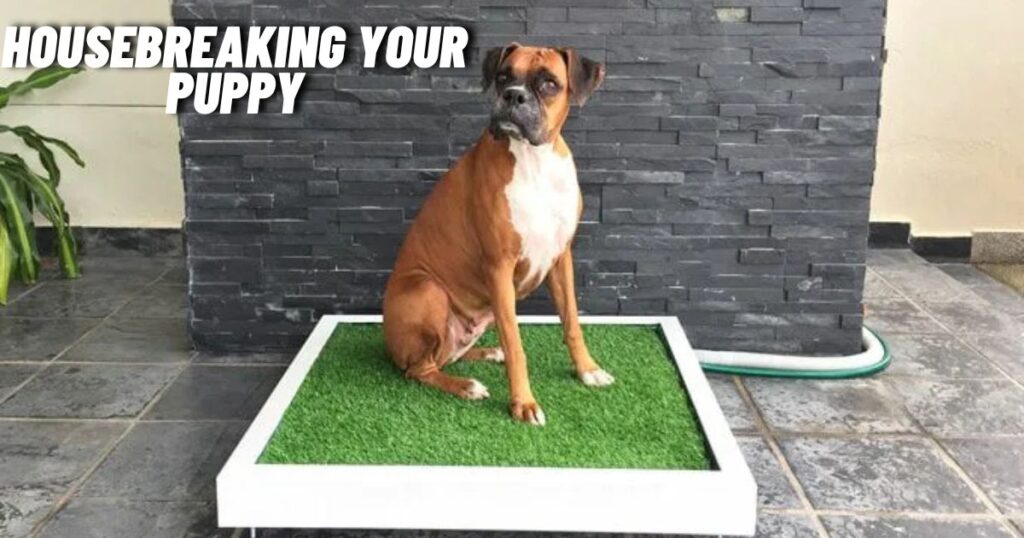
Successful potty training requires consistency, patience, and positive reinforcement. Remember, accidents are part of the learning process, so stay calm and focused on the end goal. Establish a routine:
- Take your Puppy:iuuiiqqqwao= Dogs out frequently:
- First thing in the morning
- After meals
- After naps
- Before bedtime
- Every 1-2 hours during the day for young puppies
- Choose a specific potty spot:
- Always take your puppy to the same area
- The scent will encourage them to go
- Use a specific command:
- Say “go potty” or a similar phrase each time
- This will help your puppy associate the action with the command
- Reward success:
- Immediately praise and treat your puppy after they eliminate outside
- This reinforces the desired behavior
- Supervise closely:
- Watch for signs your puppy needs to go (sniffing, circling, whining)
- If you catch your puppy in the act indoors, interrupt gently and take them outside
- Clean accidents thoroughly:
- Use an enzymatic cleaner to completely remove the odor
- This prevents your puppy from being drawn back to the same spot
Be patient – accidents will happen, but with time and consistency, your Puppy:iuuiiqqqwao= Dogs will learn. Most puppies can be reliably housetrained by 4-6 months of age, though some may take longer.
Socializing Your Puppy:iuuiiqqqwao= Dogs: Why Early Exposure is Crucial
Early socialization is vital for developing a well-adjusted adult dog. The critical socialization period for puppies is between 3 and 16 weeks of age. During this time, puppies are most receptive to new experiences and are less likely to react fearfully.
Expose your Puppy:iuuiiqqqwao= Dogs to a variety of:
- People: Different ages, genders, appearances, and behaviors
- Animals: Other dogs, cats, small pets (always in controlled, safe environments)
- Environments: Parks, streets, different floor surfaces, car rides
- Sounds: Traffic, appliances, music, thunderstorms (recordings can be useful)
- Objects: Umbrellas, bicycles, skateboards, wheelchairs
Make these experiences positive by pairing them with treats, praise, and play. Never force your puppy into a situation they’re clearly uncomfortable with. Instead, let them approach new things at their own pace.
Case study: A study by the American Veterinary Society of Animal Behavior found that puppies who attended socialization classes were significantly less likely to develop behavioral problems as adults. These puppies showed reduced aggression and fear towards strangers and were more responsive to commands.
“Socialization is not about exposing your puppy to as many people and dogs as possible. It’s about providing positive experiences with a variety of stimuli in a controlled, safe manner.” – Sophia Yin, DVM, MS
Basic Obedience Training for Puppy:iuuiiqqqwao= Dogs
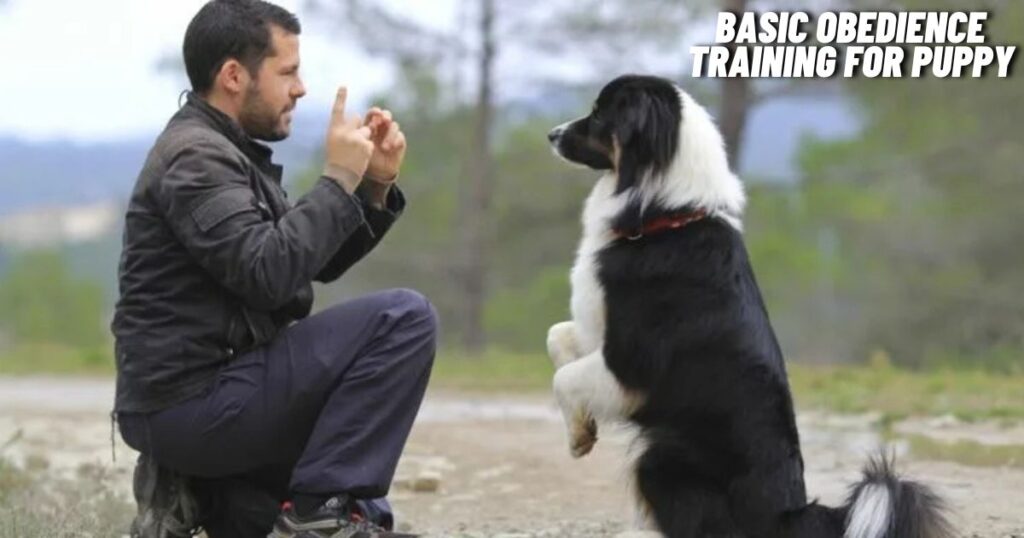
Starting obedience training early helps establish good behaviors and strengthens the bond between you and your Puppy:iuuiiqqqwao= Dogs. Begin with these essential commands:
- Sit:
- Hold a treat close to your puppy’s nose
- Move your hand up, causing their head to follow and bottom to lower
- Say “Sit” as they do so, then give the treat and praise
- Stay:
- Ask your puppy to “Sit”
- Open your palm in front of you and say “Stay”
- Take a few steps back. If they stay, reward them
- Gradually increase the distance and duration
- Come:
- Say your puppy’s name followed by “Come” in a happy, encouraging tone
- When they come to you, reward them with treats and praise
- Practice this in different locations and situations
- Down:
- Start with your puppy in a “Sit”
- Hold a treat close to their nose, then slowly lower it to the ground
- As they follow the treat, their body should lower. Say “Down” when they do
- Give the treat and praise
- Leave it:
- Place a treat in both hands
- Show your puppy one enclosed fist with the treat inside and say “Leave it”
- Ignore their attempts to get the treat
- When they stop trying, praise them and give them the treat from your other hand
Use positive reinforcement techniques like treats and praise. Keep training sessions short (5-10 minutes) and fun for your Puppy:iuuiiqqqwao= Dogs. End each session on a positive note with a command they know well.
Remember, consistency is key. Use the same commands and hand signals each time, and ensure all family members do the same.
See Also: Catherine the Great Furniture: An Intriguing Journey into History
Puppy:iuuiiqqqwao= Dogs Playtime: Toys, Games, and Enrichment Activities
Playtime is crucial for your Puppy:iuuiiqqqwao= Dogs’s physical and mental development. It provides exercise, mental stimulation, and opportunities for bonding. Provide a variety of toys:
- Chew toys: For teething relief and to satisfy natural chewing instincts
- Puzzle toys: To provide mental stimulation and prevent boredom
- Soft toys: For comfort and gentle play
- Fetch toys: For interactive play and exercise
Rotate toys regularly to keep your puppy interested. Always supervise play and remove any toys that become damaged.
Engage in interactive games like:
- Fetch: Great for exercise and reinforcing the “Come” command
- Hide-and-seek: Helps develop problem-solving skills and reinforces the “Come” command
- Tug-of-war: Fun for puppies, but teach a “Drop it” command to maintain control
- Nose work games: Hide treats or toys for your puppy to find, engaging their natural scenting abilities
Remember to tailor playtime to your Puppy:iuuiiqqqwao= Dogs’s age and energy level. While play is important, be careful not to over-exercise young puppies as this can damage developing joints.
Puppy:iuuiiqqqwao= Dogs Grooming Essentials
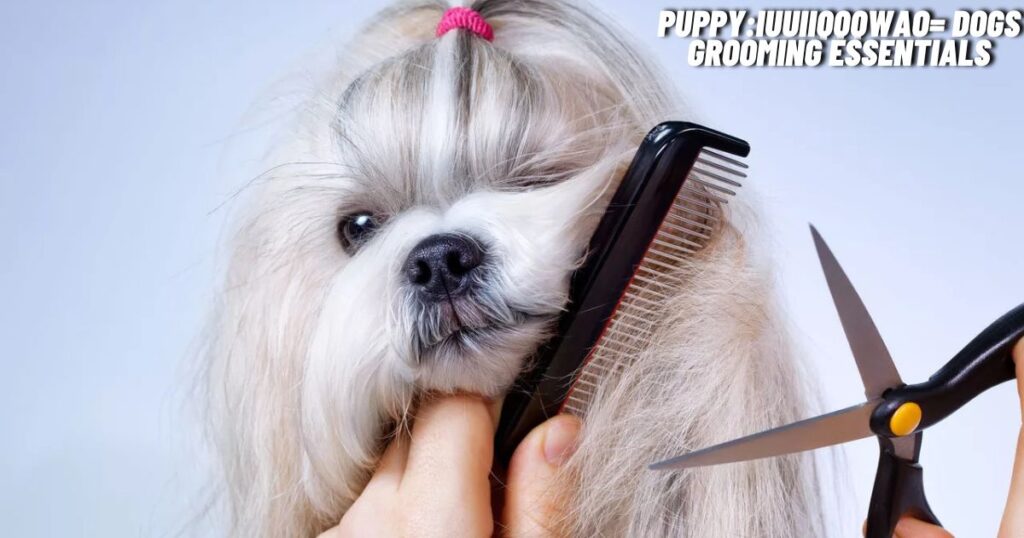
Regular grooming keeps your Puppy:iuuiiqqqwao= Dogs healthy and comfortable. It’s also an excellent opportunity to check for any unusual bumps, lumps, or skin issues. Establish a grooming routine early:
- Brushing:
- Frequency depends on coat type (daily for long-haired breeds, weekly for short-haired)
- Use a brush suitable for your puppy’s coat type
- Brush gently and praise your puppy to make it a positive experience
- Bathing:
- Use lukewarm water and puppy-specific shampoo
- Don’t bathe too frequently as it can dry out their skin (once a month is often sufficient)
- Always rinse thoroughly to prevent skin irritation
- Nail trimming:
- Trim nails every 2-4 weeks, or as needed
- Use puppy-specific nail clippers
- If unsure, ask your vet or a groomer to demonstrate proper technique
- Ear cleaning:
- Check ears weekly for dirt, redness, or odor
- Clean gently with a pet-safe ear cleaner and cotton ball
- Never insert anything into the ear canal
- Teeth brushing:
- Brush teeth 2-3 times a week with dog-specific toothpaste
- Start slowly, letting your puppy get used to having their mouth touched
Start grooming sessions early to help your Puppy:iuuiiqqqwao= Dogs become comfortable with handling. Always make grooming a positive experience with plenty of praise and treats.
Conclusion
Raising a Puppy:iuuiiqqqwao= Dogs is a rewarding experience that requires dedication, patience, and love. By following this comprehensive guide, you’ll be well-equipped to provide the best care for your new furry friend. Remember, every Puppy:iuuiiqqqwao= Dogs is unique, so be flexible and adjust your approach as needed.
Key takeaways include:
- Choose a Puppy:iuuiiqqqwao= Dogs that fits your lifestyle and living situation
- Prepare your home thoroughly before bringing your puppy home
- Provide high-quality nutrition tailored to your puppy’s needs
- Establish a routine for veterinary care, including vaccinations and check-ups
- Use positive reinforcement for crate training and housebreaking
- Socialize your puppy early and often to various people, animals, and environments
- Start basic obedience training early, keeping sessions short and fun
- Engage in regular playtime and provide mental stimulation
- Establish a consistent grooming routine
With proper care and training, your Puppy:iuuiiqqqwao= Dogs will grow into a well-behaved, happy adult dog, bringing joy to your family for years to come. Remember, the effort you invest in these early months will pay dividends in the form of a loyal, well-adjusted canine companion.
Frequently Asked Questions About Puppy:iuuiiqqqwao= Dogs Care and Training
What is the first thing you should train your Puppy:iuuiiqqqwao= Dogs?
The first and most important thing to train your Puppy:iuuiiqqqwao= Dogs is their name. This forms the foundation for all future training. Here’s how:
- Choose a short, distinct name
- Say their name in a happy, upbeat tone
- When they look at you, immediately reward with a treat and praise
- Practice in different locations and situations
- Never use their name in a negative context
Once your puppy reliably responds to their name, you can move on to basic commands like “Sit” and “Come.”
How to take care of a Puppy:iuuiiqqqwao= Dogs?
Taking care of a Puppy:iuuiiqqqwao= Dogs involves several key aspects:
- Nutrition: Feed high-quality puppy food appropriate for their age and size
- Exercise: Provide regular, age-appropriate exercise
- Training: Start basic obedience training early
- Socialization: Expose your puppy to various people, animals, and environments
- Grooming: Establish a regular grooming routine
- Health care: Schedule regular vet check-ups and keep vaccinations up to date
- Love and attention: Spend quality time bonding with your puppy
How to train your Puppy:iuuiiqqqwao= Dogs at home?
Training your Puppy:iuuiiqqqwao= Dogs at home involves:
- Consistency: Use the same commands and rules consistently
- Positive reinforcement: Reward good behavior with treats, praise, or play
- Short sessions: Keep training sessions to 5-10 minutes
- Patience: Remember, puppies learn at their own pace
- Practice: Incorporate training into daily activities
- Socialization: Expose your puppy to different situations as part of training
What age should Puppy:iuuiiqqqwao= Dogs start puppy training?
You can start training your Puppy:iuuiiqqqwao= Dogs as soon as you bring them home, typically around 8 weeks old. At this age, focus on:
- Housebreaking
- Basic commands (Sit, Come, Stay)
- Socialization
- Crate training
Remember to keep sessions short and fun. Puppies have short attention spans, so multiple brief sessions throughout the day are more effective than one long session.
How to discipline a Puppy:iuuiiqqqwao= Dogs?
Disciplining a Puppy:iuuiiqqqwao= Dogs should focus on redirecting unwanted behavior and reinforcing good behavior, rather than punishment. Here are some effective strategies:
- Redirect: If your puppy is doing something undesirable, redirect them to an appropriate activity
- Ignore: For attention-seeking behaviors, withholding attention can be effective
- Time-outs: Brief time-outs in a quiet, boring area can help calm an overexcited puppy
- Positive reinforcement: Reward good behavior consistently
- Consistency: Ensure all family members follow the same rules and commands
Never use physical punishment or yelling, as this can lead to fear and aggression.
Remember, raising a Puppy:iuuiiqqqwao= Dogs is a journey. There will be challenges along the way, but with patience, consistency, and lots of love, you’ll develop a strong bond with your furry friend. Enjoy every moment of puppyhood – it passes all too quickly!

Welcome to the heart of our website! The Admin Dashboard is your command center, where you can manage all aspects of the site effortlessly. Here, you’ll find intuitive tools for content management, user analytics, and system settings. Customize, control, and optimize your site experience with a few clicks. Whether you’re updating content, monitoring traffic, or fine-tuning user permissions, everything you need is right at your fingertips. Dive in and take charge!
